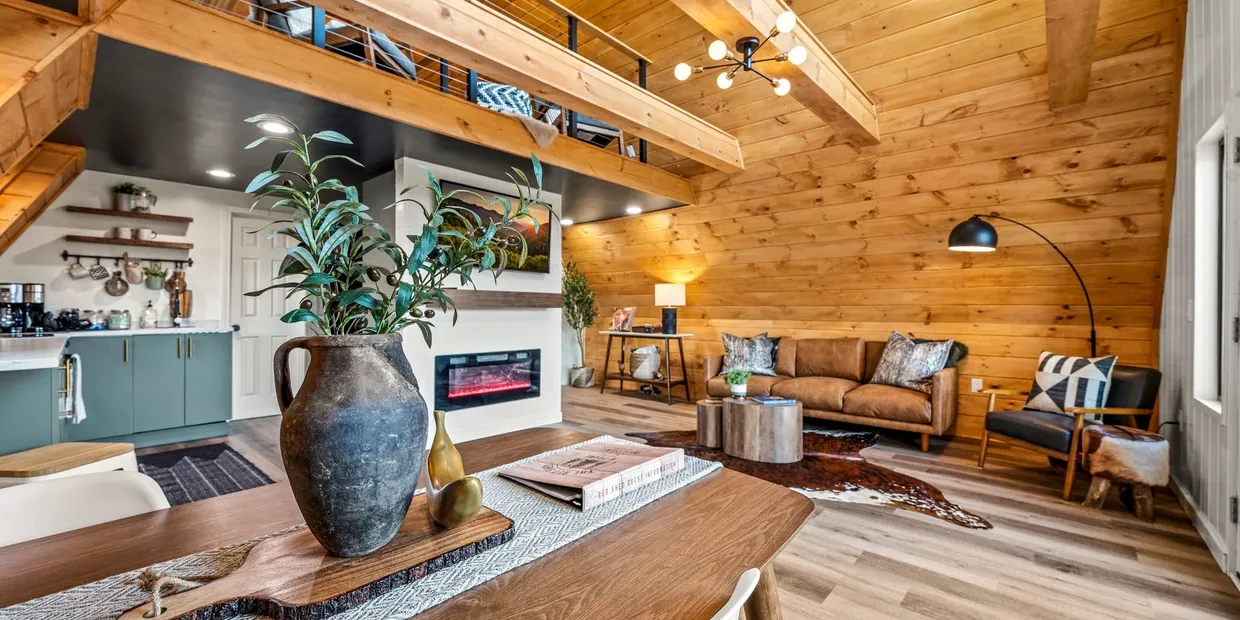Wallpaper for Interior Design
Wallpaper has been a staple in interior design for centuries, adding depth, texture, and personality to any space. From historical palaces to modern homes, wallpaper has evolved from a luxury item to a practical and stylish choice for enhancing interiors.
The History of Wallpaper
Dating back to ancient China, where it was initially used as decorative scrolls, wallpaper has a rich history spanning cultures and centuries. In Europe, it became popular during the Renaissance, adorned with intricate patterns and motifs, often hand-painted and expensive, reserved for the elite. With the Industrial Revolution, wallpaper production became more accessible, leading to its widespread use in homes worldwide.
Benefits of Using Wallpaper in Interior Design
Enhanced Aesthetics
Wallpaper offers endless design possibilities, from subtle textures to bold prints, allowing homeowners to express their style and create visually stunning spaces.
Versatility
Unlike paint, wallpaper can be used to mimic various materials such as wood, brick, or stone, adding depth and warmth to any room.
Cost-Effectiveness
While quality wallpaper can be an initial investment, its durability and timeless appeal make it a cost-effective choice in the long run, requiring less frequent updates compared to paint.
Types of Wallpaper
There are various types of wallpaper, each with its unique characteristics and suitability for different environments:
Vinyl Wallpaper
Durable and moisture-resistant, vinyl wallpaper is ideal for high-traffic areas like kitchens and bathrooms.
Textile Wallpaper
Textile wallpaper adds warmth and texture, perfect for creating a cozy atmosphere in living rooms and bedrooms.
Foil Wallpaper
Reflective and glamorous, foil wallpaper is an excellent choice for accent walls in contemporary interiors.
Grasscloth Wallpaper
Made from natural fibers, grasscloth wallpaper brings an organic, earthy feel to spaces, ideal for eco-conscious homeowners.
Choosing the Right Wallpaper for Different Rooms
Living Room
Opt for bold patterns or textured wallpapers to create a focal point, complementing your furniture and decor.
Bedroom
Choose soothing colors and soft textures to promote relaxation and enhance the ambiance of your bedroom.
Kitchen
Vinyl or washable wallpaper is recommended for kitchens, providing easy maintenance and durability against grease and moisture.
Bathroom
Select moisture-resistant wallpaper designed specifically for bathrooms to prevent mold and mildew growth.
Tips for Installing Wallpaper
Surface Preparation
Ensure walls are clean, smooth, and properly primed before applying wallpaper to achieve a flawless finish.
Choosing the Right Adhesive
Select the appropriate adhesive based on the type of wallpaper and wall surface to ensure a strong and lasting bond.
Proper Application Techniques
Follow manufacturer instructions carefully, using a wallpaper smoother or brush to eliminate air bubbles and wrinkles during installation.
Trends in Wallpaper Design
Bold Patterns and Colors
Statement wallpapers featuring oversized florals, geometric shapes, or vibrant hues are on-trend, adding drama and personality to spaces.
Nature-inspired Designs
Bring the outdoors in with botanical prints, tropical motifs, or scenic landscapes, creating a serene and tranquil atmosphere.
Geometric Patterns
Minimalist and modern, geometric wallpapers in subtle tones or metallic finishes add visual interest without overwhelming the space.
Maintenance and Care for Wallpaper
Regular dusting and occasional spot cleaning with mild detergent and water are usually sufficient to maintain the beauty of wallpaper. For stubborn stains or damage, consult a professional for repairs or replacement.
DIY Wallpaper Projects
For a budget-friendly refresh, consider DIY wallpaper projects such as creating an accent wall or customizing furniture with leftover wallpaper scraps.
Working with Wallpaper Professionals
For complex installations or custom designs, hiring a professional wallpaper installer ensures a flawless finish and saves time and effort.
Environmental Impact of Wallpaper
While traditional wallpaper production may have environmental implications, there are eco-friendly options available, including recycled materials and water-based inks, reducing the carbon footprint of your interior design choices.
Conclusion
Wallpaper remains a versatile and timeless choice for interior design, offering endless possibilities for customization and expression. From classic patterns to modern designs, wallpaper adds character and charm to any space, enhancing its aesthetics and functionality.


No comments yet